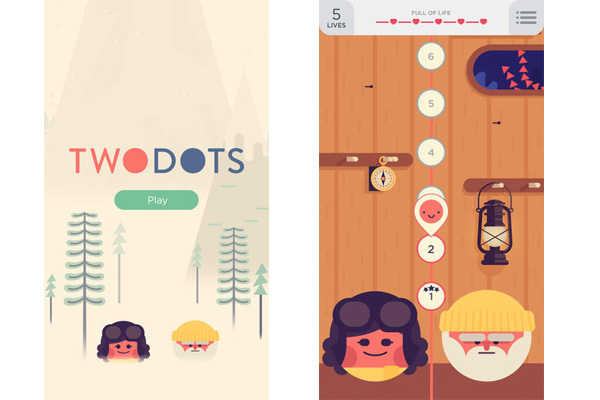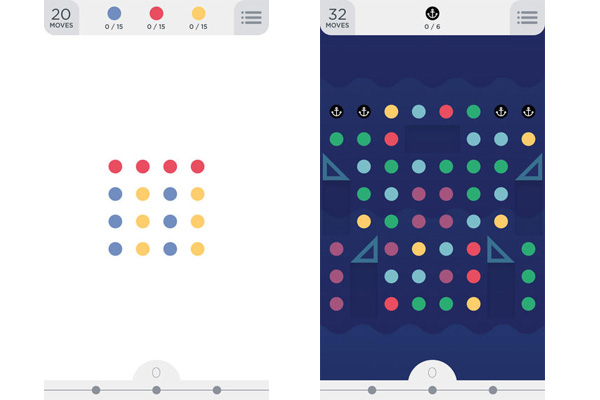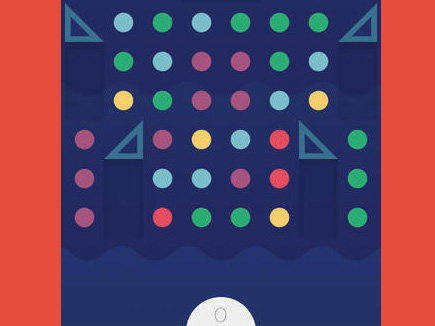Tom's Guide Verdict
Two Dots takes dot-connecting to new heights, adding depth and personality with quirky illustrations and 85 levels of evolving gameplay.
Pros
- +
Intriguing new mechanics
- +
Good sense of story
- +
85 challenges
- +
Free
Cons
- -
Intrusive in-app purchase offers
- -
No more 1-on-1 challenges
Why you can trust Tom's Guide
New York-based incubator Betaworks has released the follow-up to its iOS megahit "Dots," aptly naming it "Two Dots" (iOS only, free). The original "Dots" garnered more than 20 million downloads, and the sequel has a lot to live up to. Six months ago, Betaworks sent half its development team into exile. The banished team's mission: to expand upon "Dots," while adding depth in a fun and unique way. It's safe to say "Two Dots" has met the goal of delivering a deeper "Dots" experience.
New features, plus a story
"Two Dots" has the same minimalist look as "Dots," but with the addition of friendly indie illustrations and a quaint sound loop that seems like it belongs in a Wes Anderson movie. Gone are some modes "Dots" veterans may remember, such as the "Timed" and "Moves" modes.
MORE: 20 Must-Play iOS Games for iPhone and iPad
Challenging other players now takes place only through Facebook Connect, as the head-to-head battles of "Dots" are not present in the sequel. In their place is an 85-level challenge mode filled with new puzzles, and evolving gameplay complemented by a set of 10 achievements.

At its core, "Two Dots" is still the same circle-connecting game that created so many "Dots" fans last year. Players connect similarly colored dots to eliminate them from the grid as new dots fall down to take the missing objects' place.
Players can also create squares to eliminate all dots of a single color from the grid, a skill vital for progressing through challenges. One nice new feature is a tutorial accessed from the settings menu, handy for new players or veterans who need a quick refresher.
As you get past the introductory levels, "Two Dots" adds new mechanics, such as anchor tiles, that throw wrenches in your dot-connecting plans. The new mechanics create a story-like gameplay as you advance into new worlds. Replayability improves with the addition of awards (up to three stars) per level, based on large combos and the fewest number of moves used.

Players will experience multiple themes as they make their way through 85 levels of challenges and adventures. This gives "Two Dots" a much deeper and rewarding single-player experience, creating a sense of progression not found in the original.
Pay to play
We don't like the addition in "Two Dots" of a heavier reliance upon in-app purchases. In "Dots," players could play in "Timed," "Moves" or "Challenge" modes for free, with "Endless" mode available for $1.99.
That's not the case in "Two Dots." For example, "Story" mode is limited by moves you can make per puzzle, and the game will prompt you to buy extra moves for $0.99 if you run out before completing the puzzle.
Players have only five lives at most, and when you run out of moves, you lose one life. The game will again prompt you to buy more lives for $0.99.
While lives do regenerate at the rate of one per 20 real-world minutes, locking both extra moves and extra lives behind the paywall seems too punitive. Later levels will even ask you to buy bombs — again, for $0.99 — to blow up the aforementioned anchor tiles.
The difference between selling modes in "Dots" versus selling time in "Two Dots" may be one reason the original averages 4.5 stars in App Store reviews, while the sequel averages only 4.
Bottom line
Users hungry for more dots will find the sequel's lengthy challenge mode and new mechanics a great way to satiate their appetites. While the frequent prompts for in-app purchases are somewhat annoying, the evolving gameplay makes "Two Dots" a much more satisfying experience than the original.
Just be prepared to fork over a couple of bucks for extra lives if you don't have the patience to wait for more. You will definitely need them.
Sam is a Senior Writer at Engadget and previously worked at Gizmodo as a Senior Reporter. Before that, he worked at Tom's Guide and Laptop Mag as a Staff Writer and Senior Product Review Analyst, overseeing benchmarks and testing for countless product reviews. He was also an archery instructor and a penguin trainer too (really).
-
Karen Tijerina Overall I like Two Dots but some of the levels are SO hard you can't beat them even with buying extra lives and crates and that makes me not like it.Reply

